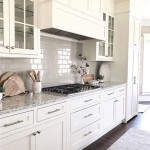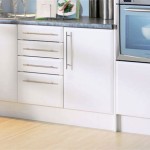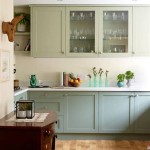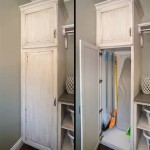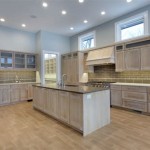Melamine Kitchen Cabinets: Pros and Cons
Melamine kitchen cabinets have become a popular choice for homeowners due to their affordability and durability. Understanding the advantages and disadvantages of this material is crucial for making an informed decision. This article explores the pros and cons of melamine kitchen cabinets to help consumers navigate the selection process.
Pros of Melamine Kitchen Cabinets
Melamine cabinets offer several benefits that contribute to their widespread use:
- Cost-Effective: Melamine is significantly less expensive than other cabinet materials like wood or thermofoil, making it an attractive option for budget-conscious renovators.
- Durability: Melamine is resistant to scratches, chips, and moisture, making it a suitable choice for the demanding kitchen environment.
- Easy Maintenance: Cleaning melamine cabinets is simple, requiring only a damp cloth and mild detergent. Their non-porous surface prevents stains from penetrating.
- Wide Variety of Styles and Colors: Melamine can be manufactured in a wide range of colors, patterns, and textures, allowing homeowners to achieve various design aesthetics.
- Consistent Finish: Unlike natural wood, melamine provides a uniform and consistent finish across all cabinet doors and drawers.
- Fade Resistance: Melamine cabinets hold their color well over time and are resistant to fading caused by sunlight exposure.
- Easy Installation: The lightweight nature of melamine makes installation easier and quicker compared to heavier materials.
Cons of Melamine Kitchen Cabinets
While melamine offers several advantages, it also has some drawbacks to consider:
- Susceptibility to Heat Damage: Melamine is susceptible to damage from high heat sources, such as hot pots and pans. Using trivets or heat pads is recommended.
- Limited Repair Options: Damaged melamine surfaces are difficult to repair seamlessly. Often, the entire cabinet door or drawer front needs replacing.
- Weight Capacity: Melamine cabinets may not be as strong as solid wood or plywood cabinets and may have lower weight-bearing capacities for shelves.
- Appearance: While melamine can mimic the look of wood or other materials, it may not have the same depth and richness as natural surfaces.
- Moisture Sensitivity at Edges: While the melamine surface is moisture-resistant, the exposed edges, especially around sinks and dishwashers, can be susceptible to water damage if not properly sealed.
Melamine Construction and Composition
Understanding the construction of melamine cabinets can shed light on their performance and durability.
- Substrate Material: Melamine cabinets are typically constructed using particleboard or medium-density fiberboard (MDF) as the core material.
- Melamine Resin Coating: A thin layer of melamine resin is bonded to the substrate under heat and pressure, creating a durable and decorative surface.
- Edge Banding: The exposed edges of the substrate are covered with edge banding to protect against moisture and impact damage.
Comparing Melamine to Other Cabinet Materials
Melamine cabinets offer a different set of characteristics compared to other popular cabinet materials:
- Melamine vs. Solid Wood: Solid wood offers a premium look and feel but is significantly more expensive and requires more maintenance than melamine.
- Melamine vs. Thermofoil: Thermofoil provides a smooth, seamless finish and is moisture-resistant but can be prone to peeling and chipping with heat exposure. Melamine offers better heat resistance.
- Melamine vs. Laminate: Laminate is a high-pressure decorative surface similar to melamine but typically applied to a plywood substrate, offering greater strength and durability, but at a higher cost.
Considerations for Choosing Melamine Kitchen Cabinets
Several factors should influence the decision to choose melamine kitchen cabinets:
- Budget: Melamine is an excellent choice for homeowners seeking an affordable cabinet option.
- Lifestyle: The low-maintenance nature of melamine makes it suitable for busy households.
- Design Preferences: The wide variety of styles and colors available in melamine allows for customization to suit different design aesthetics.
- Long-Term Durability Needs: Understanding the limitations of melamine regarding heat and moisture sensitivity is crucial for ensuring its longevity in the kitchen environment.
Proper Care and Maintenance for Melamine Cabinets
Extending the lifespan of melamine kitchen cabinets involves following some basic care guidelines:
- Regular Cleaning: Wipe down surfaces with a damp cloth and mild detergent.
- Avoid Abrasive Cleaners: Harsh chemicals and abrasive cleaning pads can damage the melamine surface.
- Protect from Heat: Use trivets and heat pads to prevent damage from hot cookware.
- Address Spills Promptly: Wipe up spills immediately to prevent staining or water damage, especially around edges.

Melamine Cabinets Pros And Cons

Melamine Cabinets Pros And Cons

Melamine Cabinets Pros And Cons

Melamine Cabinets Pros And Cons

The Pros And Cons Of Melamine Kitchen Cabinets Smart Tips

Melamine Vs Natural Wood Cabinets

Melamine Cabinets Pros And Cons To Consider Guilin

Melamine Cabinets Pros And Cons

Melamine Vs Natural Wood Cabinets

News Foshan Hanse Industrial Co Ltd
Related Posts

